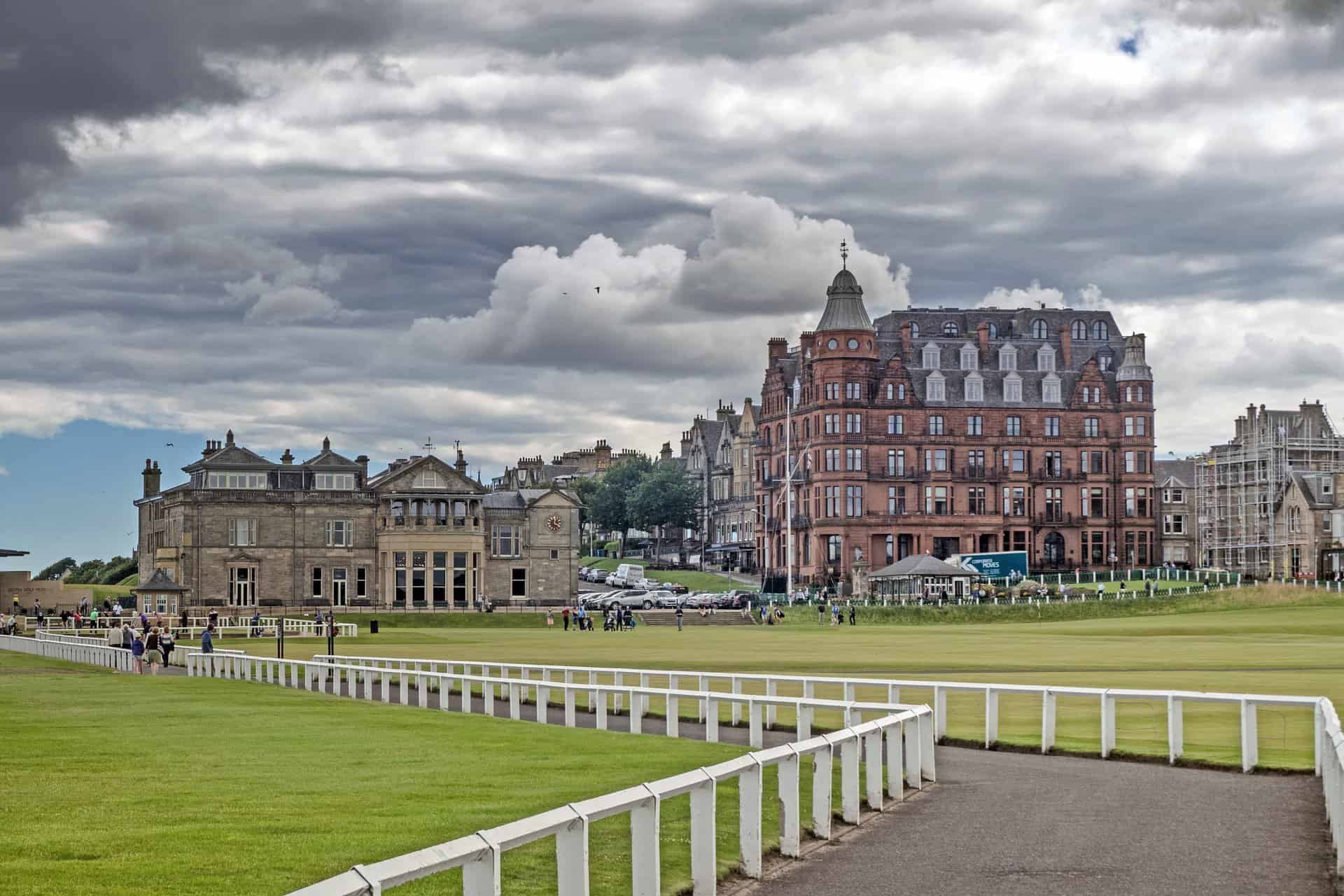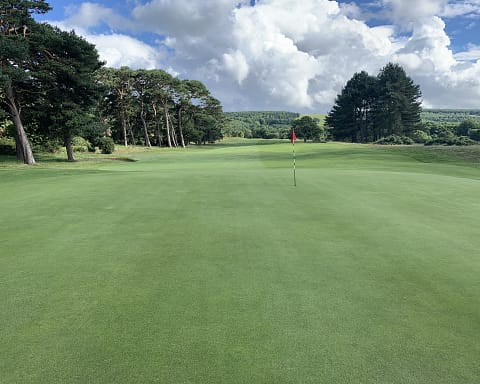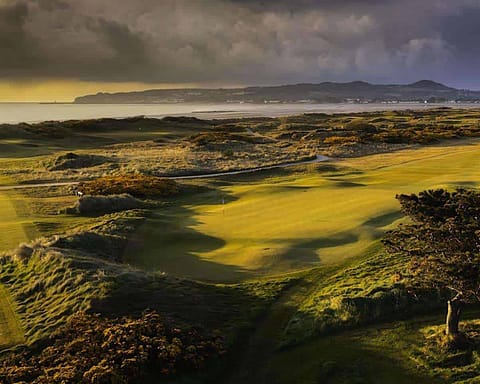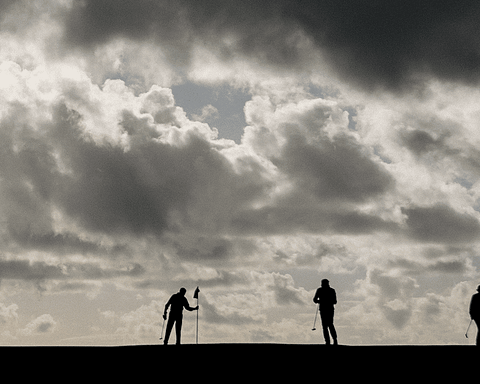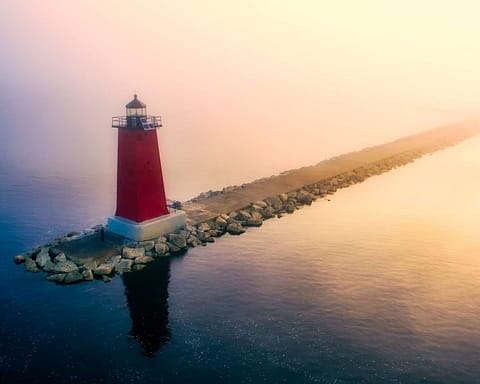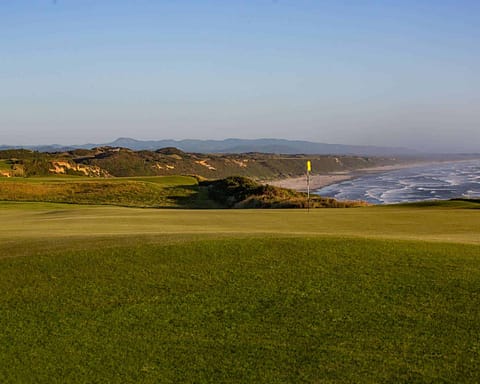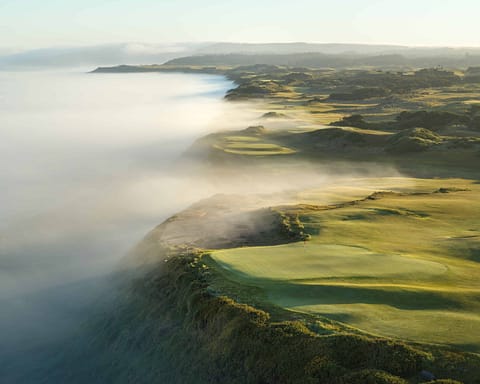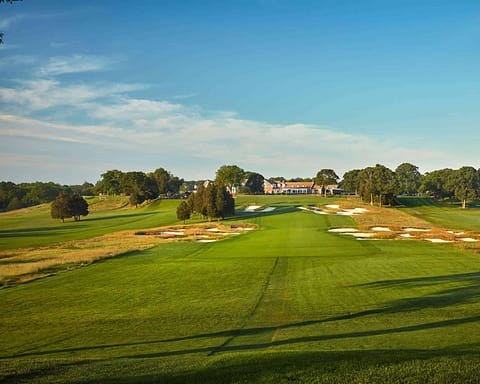St Andrews and Chariots of Fire: the association immediately brings to mind the evocative opening moments of the celebrated Oscar-winning film, a sequence which has long since taken its place in cinematic history.
The iconic images of young British athletes striding out across a windswept beach in slow-motion are set to one of cinema’s most remarkable soundtracks, written by the Greek composer Vangelis. To golfers the world over, they are also memorable for another reason.
Eric Liddell and Harold Abrahams, the film’s two protagonists, are among the athletes who run up West Sands beach in St Andrews, hurdle the railings and run across the first fairway of the Old Course itself, before skirting the hallowed 18th green and disappearing up the steps of the Royal & Ancient. But how did such an iconic opening scene end up being shot at an equally iconic location?
“The original scene was set on the beach at Broadstairs in Kent – which was historically accurate – but our unit was never going to be anywhere near there, and so, because we were filming nearby, St Andrews popped up as an idea,” says award-winning film producer Iain Smith, who was a unit manager on the film. “What started as ‘beach only’ grew into the scene setter it is in the film, where the runners cross the hallowed turf of the Old Course.”
“The R&A’s permission required our assurance that the ‘athletes’ would only run across the sacred turf in their bare feet, which is exactly what they did.”
Iain Smith, film producer
In the first edit of the film the words – BROADSTAIRS, KENT – appeared on screen as the runners approached the most famous scene in all of golf.
Laughter among the audience the film was tested on, prompted producers to subsequently, and wisely, remove the text from the final film. “We actually shot the whole sequence twice,” Smith tells The Wandering Golfers. “First time round we were able to get the residents to move all their cars from the sea-front. But the footage was unusable because we had a strange camera shutter flicker that made it unwatchable.
“So, I had to set it all up again, but this time the residents had had enough of us and were unwilling to co-operate. So, for the second go, I built a half mile long camouflage screen to conceal all the parked cars. I had the bright idea of asking RAF Leuchers if they could help and they jumped at the task. I think they were all bored stiff, and my call was a clarion call to arms. They were great.”

But that was not to be the last drama at St Andrews. “I remember the morning we shot that famous scene very clearly,” Smith says. I went down to the beach at 4.30 in the morning to make sure everything was in place ahead of the crew’s arrival. To my horror I saw that a naval frigate had moored offshore and was unavoidably in the middle of the shot, and obviously not in period. I panicked and ran the long mile to the nearest red phone box (no cellphones back then) and stood, out of breath, wondering who on earth I could call at that hour of the morning?
“I didn’t know anyone in the navy but of course I did know some good people in the Air Force, at Leuchers. So, I rang my number there and a very clipped military voice answered, “Duty Officer, how can I help?”. I explained my predicament. He said, “Are you sure there’s a ship there? We really deal with airplanes.” I said, “yes, I realise that, but I can see it with my own eyes. It’s right in front of me”. He hummed and hawed a bit and said, “No. Nothing there. We’ve got no record of anything at all. Are you absolutely sure you’re not imagining it?”, and at that moment the frigate started to pull away. It had disappeared round the headland by 5.45. My knees went all wobbly. The day could begin. Not a lot of people know that story.”

And how did the film negotiate with the R&A to get permission to run across the Old Course and so close to the 18th green itself? “I was fortunate that I had family connections with the Church of Scotland through my grandfather, who had been a prominent minister in Edinburgh. So, I was one step ahead when it came to making a film about Eric Liddell. Because of that, I had already negotiated support in principle from the Church. When the Old Course came up, I had to use every persuasive tactic I could to get the Club Captain’s approval. The Church of Scotland made a call, I believe, and clinched it. The club’s permission required our assurance that the ‘athletes’ would only run across the sacred turf in their bare feet, which is exactly what they did.”
‘Chariots’ would go on to win four Academy Awards for best picture, best original screenplay, best costume design and, of course, best original music score for Vangelis. “During shooting we certainly knew we were making something above average,” Smith says. “The script was so good, and the cast was magnificent. And the crew were top class. The brilliant David (Wendy) Watkin was our cinematographer. Jonathan Benson our charismatic 1st AD.
“But I remember seeing the final picture cut (without music) and feeling disappointed. It dragged a little in the second half. Warner Bros asked David (Putnam, the producer) and Hugh (Hudson, the director) to cut something like 14 minutes out, and Vangelis then delivered his inspirational score. That transformed the film into the award-winning movie it became. That was when I personally realised, we had all contributed to something very special.”
Vangelis, it would later transpire, wrote the music as a tribute to his father who had died some three months before. His father had run for Greece himself, so the story took on additional poignancy. ‘Chariots’ has been sent up many times over the years, not least by Rowan Atkinson during the opening ceremony for the 2012 Olympic Games in London.
St Andrews and Chariots of Fire will forever be bound together in some way and that iconic opening sequence will always have a place in cinematic history. For golfers making the pilgrimage to The Home of Golf, it only adds a little more magic to place that is already very special indeed.

